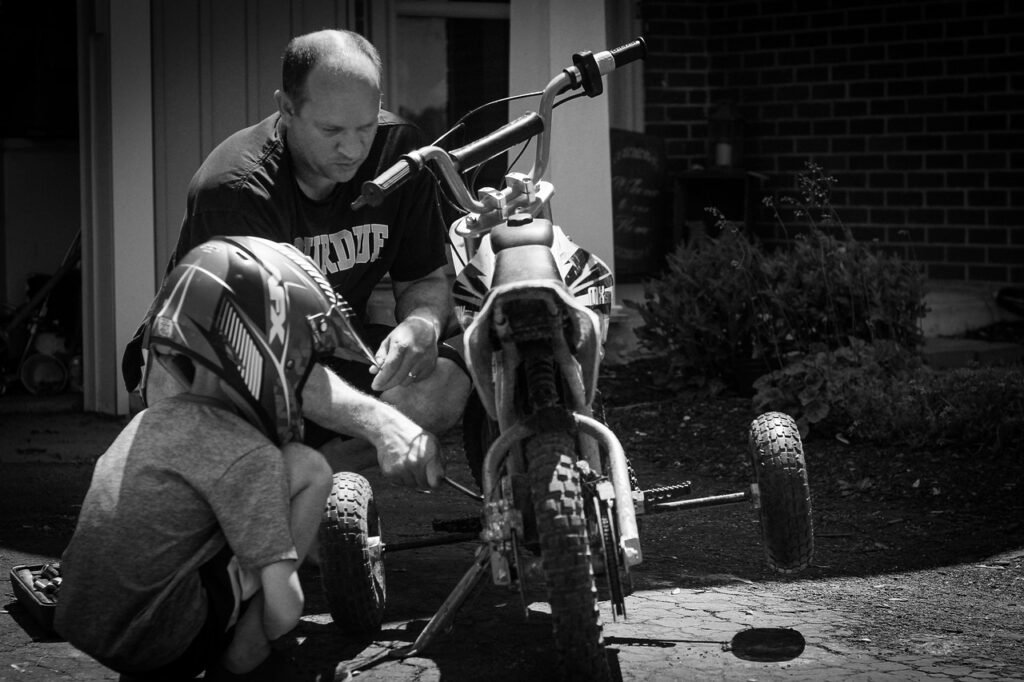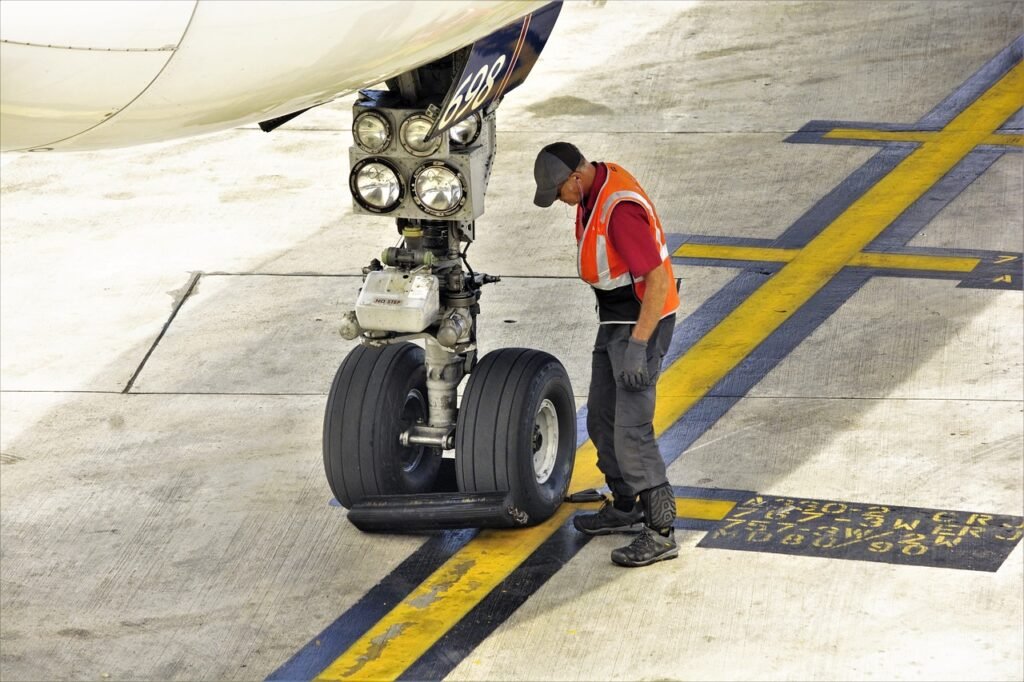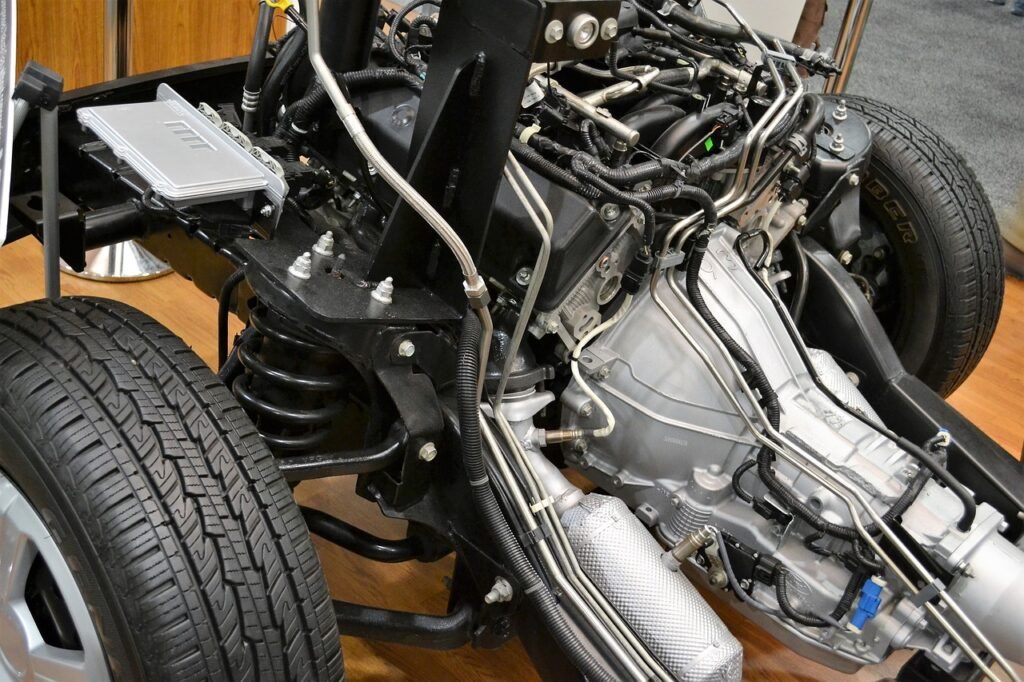Taking care of your tires is crucial for safe and smooth driving experiences. With these 5 routine tire inspection tips, you’ll learn how to keep your tires in top condition. From checking the tread depth to ensuring proper inflation, these tips will equip you with the knowledge and skills to maintain your tires and stay on the road with confidence. So, let’s get started and discover the simple steps that will help you prioritize tire safety and extend the lifespan of your tires.
Inspect the Tread Depth
When it comes to ensuring the safety and performance of your tires, one of the most important things to check is the tread depth. The tread is the part of the tire that makes contact with the road, providing grip and traction. Over time, the tread can wear down, reducing its effectiveness and compromising your safety on the road. Checking the tread depth regularly is crucial to identifying any signs of wear and knowing when it’s time to replace your tires.
Check for Wear Indicators
Most modern tires have built-in wear indicators that can help you determine when the tread has worn down to an unsafe level. These indicators are small rubber bars that are placed in the tread grooves. If the wear on your tire has reached the height of these bars, it’s a clear sign that the tread is worn and the tire needs to be replaced. They act as a visual indicator to let you know when it’s time to start shopping for new tires.
Measure the Tread Depth
Another way to check the tread depth is by using a tread depth gauge. This simple tool allows you to measure the depth of the tread in millimeters. Simply insert the gauge into the tread groove and read the measurement. It’s important to note that the legal limit for tread depth varies by jurisdiction, but a general rule of thumb is to replace tires when the tread depth reaches 2/32 of an inch (1.6 millimeters).
Use a Penny for a Quick Check
If you don’t have a tread depth gauge on hand, you can also perform a quick and simple test using a penny. Take a penny and insert it into the tread groove with Lincoln’s head upside down. If the top of Lincoln’s head is visible, it means the tread is too shallow and it’s time to replace your tires. On the other hand, if the tread covers the top of Lincoln’s head, it indicates that the tread depth is still sufficient.
Check for Uneven Wear
In addition to inspecting the overall tread depth, it’s important to look for any signs of uneven wear on your tires. Uneven wear can indicate issues with alignment, suspension, or even tire pressure, all of which can affect the performance and safety of your tires.
Look for Feathering
Feathering refers to a condition where the edges of the tread blocks on one side of the tire are significantly smoother than the edges on the other side. This can occur due to misalignment or other suspension issues. To check for feathering, run your hand along the edge of the tread blocks. If you feel a distinct difference in smoothness between the two sides, it’s an indication that there is uneven wear.
Inspect for Cupping
Cupping is characterized by random scooped or scalloped depressions on the tire’s surface. It often indicates suspension problems, such as worn-out shocks or struts. To check for cupping, run your hand over the surface of the tire. If you feel any irregularities or indentations, it’s a sign of cupping and should be addressed promptly.
Check for Shoulder Wear
Shoulder wear refers to excessive wear on the outer edges or inner edges of the tire tread. This can occur due to misalignment, underinflated tires, or aggressive driving habits. Inspect the shoulders of your tires for any signs of wear or smoothness. If you notice significant shoulder wear, it’s essential to address the underlying issues and ensure proper tire maintenance.

This image is property of pixabay.com.
Examine the Tire Sidewalls
The sidewalls of your tires are just as important as the tread when it comes to maintaining tire safety. The sidewalls provide structural integrity and support for the tire, and any damage or weakness can compromise the tire’s overall performance.
Check for Bulges or Blisters
Bulges or blisters on the sidewall are a clear indication of internal tire damage and can lead to a sudden blowout if left unaddressed. These bulges or blisters may be caused by impact damage, such as hitting a pothole or curb, or by a manufacturing defect. Carefully run your hand along the sidewall to detect any abnormalities. If you feel a bulge or blister, it’s essential to replace the tire immediately.
Look for Cracks or Cuts
Inspect the sidewalls for any cracks or cuts. These may be caused by aging, exposure to extreme temperatures, or debris on the road. While small surface cracks may not pose an immediate threat, larger or deeper cuts can weaken the tire’s structure and increase the risk of a blowout. If you notice any significant cracks or cuts, it’s best to have your tire inspected by a professional and potentially replaced if necessary.
Inspect for Damage or Embedded Objects
While inspecting the tread and sidewalls, it’s important to also check for any visible damage or embedded objects that may have penetrated the tire.
Inspect for Nails or Other Objects
Carefully examine the tread and sidewalls for any nails, screws, or other sharp objects that may have become lodged in the tire. These objects can lead to punctures or leaks, causing air loss and potentially compromising your safety on the road. If you find any foreign objects, it’s critical to have the tire repaired or replaced as soon as possible.
Look for Sidewall Punctures or Gashes
In addition to checking for foreign objects, inspect the sidewalls for any punctures or gashes. These can occur if you accidentally scrape against a curb or hit a sharp object on the road. Sidewall damage can be more challenging to repair, so it’s important to have a professional assess the severity of the damage and determine if the tire needs to be replaced.

This image is property of pixabay.com.
Check the Tire Pressure
Proper tire pressure not only ensures optimal performance but also promotes safety and fuel efficiency. Regularly checking the tire pressure is a simple yet crucial part of tire maintenance.
Use a Tire Pressure Gauge
To accurately measure your tire pressure, use a tire pressure gauge. These inexpensive tools are easy to use and widely available. Simply remove the valve cap, firmly press the gauge onto the valve stem, and read the pressure displayed on the gauge. Repeat this process for each tire, including the spare.
Refer to the Manufacturer’s Recommended Pressure
To determine the correct tire pressure, refer to your vehicle’s owner’s manual or the sticker located on the driver’s side door jamb. The recommended pressure may vary depending on the vehicle and the type of tire used. It’s important to follow these guidelines to ensure proper inflation and avoid over or underinflating the tires.
Check the Pressure When Tires are Cold
To get the most accurate tire pressure reading, it’s important to check the pressure when the tires are cold. This means the vehicle should have been parked for at least a few hours and hasn’t been driven for an extended period. Driving can increase tire temperature and pressure, leading to inaccurate readings. Cold tire pressure readings provide a baseline for accurate inflation.
Inspect the Valves and Valve Caps
While checking the tire pressure, take the opportunity to inspect the valves and valve caps. These components play a crucial role in maintaining tire inflation and preventing air leaks.
Ensure Valve Caps are Securely Fastened
Valve caps are small plastic or metal caps that thread onto the valve stem. Their primary purpose is to keep out dirt, moisture, and debris, preventing air leaks and maintaining proper tire pressure. Ensure that all valve caps are securely fastened and in good condition. If any valve caps are missing or damaged, replace them promptly to protect the valve stems from potential damage.
Check for Leaks or Damage
Inspect the valve stems for any signs of leaks or damage. Leaking valves can cause gradual air loss, leading to underinflation and potential tire damage. If you notice any leaks or damage, it’s best to have the valve stems inspected and repaired by a professional.

This image is property of pixabay.com.
Look for Signs of Irregular Wear
Beyond the tread depth and overall wear, it’s important to inspect your tires for signs of irregular wear patterns. These patterns can indicate underlying issues with alignment or suspension, and addressing them promptly can prevent further damage and improve tire longevity.
Inspect for Scalloping
Scalloping, also known as cupping, is characterized by uneven wear along the edge of the tread blocks, creating a scalloped pattern. This can be caused by suspension issues or imbalanced tires. Inspect the tread for any signs of scalloping or irregular wear. If you notice these patterns, it’s important to address the underlying issues and have the tires rotated or realigned as necessary.
Check for Center Wear
Center wear refers to excessive wear in the center portion of the tire tread, while the shoulders remain relatively intact. This can occur due to overinflation or overloading of the tire. Regularly inspect the tread for any signs of center wear, such as smoothness or a distinct wear pattern. Adjusting the tire pressure to the manufacturer’s recommended level can help prevent this type of wear.
Look for Edge Wear
Edge wear, as the name suggests, is excessive wear on the shoulder portions of the tire tread, while the center remains relatively intact. This can be caused by underinflation or aggressive cornering. Inspect the tread edges for any signs of wear or smoothness. If you notice significant edge wear, it’s important to address any underlying issues and adjust the tire pressure or driving habits accordingly.
Check for Proper Wheel Alignment
Proper wheel alignment is crucial for maintaining tire performance, stability, and even wear. Misaligned wheels can lead to uneven tire wear and compromise your safety on the road. Regularly checking the alignment of your wheels is an important part of tire maintenance.
Observe for Steering Pull
When driving on a straight and level road, pay attention to any steering pull. If you notice that your vehicle tends to veer left or right without any input from the steering wheel, it may be an indicator of misalignment. Misaligned wheels can cause uneven tire wear, leading to the need for premature tire replacement. If you experience persistent steering pull, it’s essential to have the wheel alignment checked by a professional.
Inspect for Uneven Tire Wear
Uneven tire wear can be a sign of alignment issues. If you notice significant differences in the wear patterns between tires, it’s a clear indication that something is off. Uneven wear can be observed by comparing the tread depth and wear patterns of each tire. Addressing misalignment promptly can help extend the life of your tires and improve overall vehicle performance.
Keep an Eye on the Spare Tire
While we often focus on the condition of the primary tires, it’s equally important to regularly inspect and maintain the spare tire. The spare tire can be a lifesaver in the event of a flat or blowout, so ensuring its proper condition is essential.
Inspect the Tread and Sidewalls
When checking the spare tire, follow the same steps outlined earlier for inspecting the primary tires. Check the tread depth, look for signs of wear or damage on the sidewalls, and ensure the tire is free from any objects or embedded debris. A spare tire with insufficient tread depth or damage may not be as reliable in emergency situations.
Check the Tire Pressure
Just like with the primary tires, it’s important to regularly check the pressure of the spare tire. Use a tire pressure gauge to measure the pressure and compare it to the manufacturer’s recommended pressure. Ensure that the spare tire is properly inflated to ensure its readiness in case of an emergency.
Know When to Replace Your Tires
No matter how well you maintain and care for your tires, there comes a time when they will need to be replaced. It’s important to pay attention to several key factors that can indicate when it’s time to invest in a new set of tires.
Pay Attention to the Tread Wear Indicator Bars
As mentioned earlier, most tires have built-in wear indicators in the form of small rubber bars placed in the tread grooves. When the wear on your tire reaches the height of these bars, it’s a clear indication that the tread has worn down to an unsafe level. Pay attention to these wear indicators and consider replacing your tires if they become visible.
Check the Tire Age
Tire age can play a significant role in tire safety and performance. Even if your tires have plenty of tread depth, they may need to be replaced due to age-related issues. Tires can degrade over time, especially if they are exposed to harsh weather conditions or excessive heat. It’s generally recommended to replace tires that are six years old or older, regardless of their external appearance.
Consider the Climate and Driving Conditions
The climate and driving conditions in which you regularly operate your vehicle can affect the lifespan and performance of your tires. Extreme temperatures, rough road surfaces, and challenging terrain can accelerate tire wear. If you frequently drive in such conditions, it’s important to monitor your tires closely and consider replacing them more frequently to ensure your safety on the road.
By following these routine tire inspection tips, you can be confident in the safety and performance of your tires. Regular inspections and maintenance will not only extend the life of your tires but also enhance your driving experience and provide peace of mind on the road. Remember to prioritize tire safety and address any issues promptly to ensure your journeys are as smooth and safe as possible.





